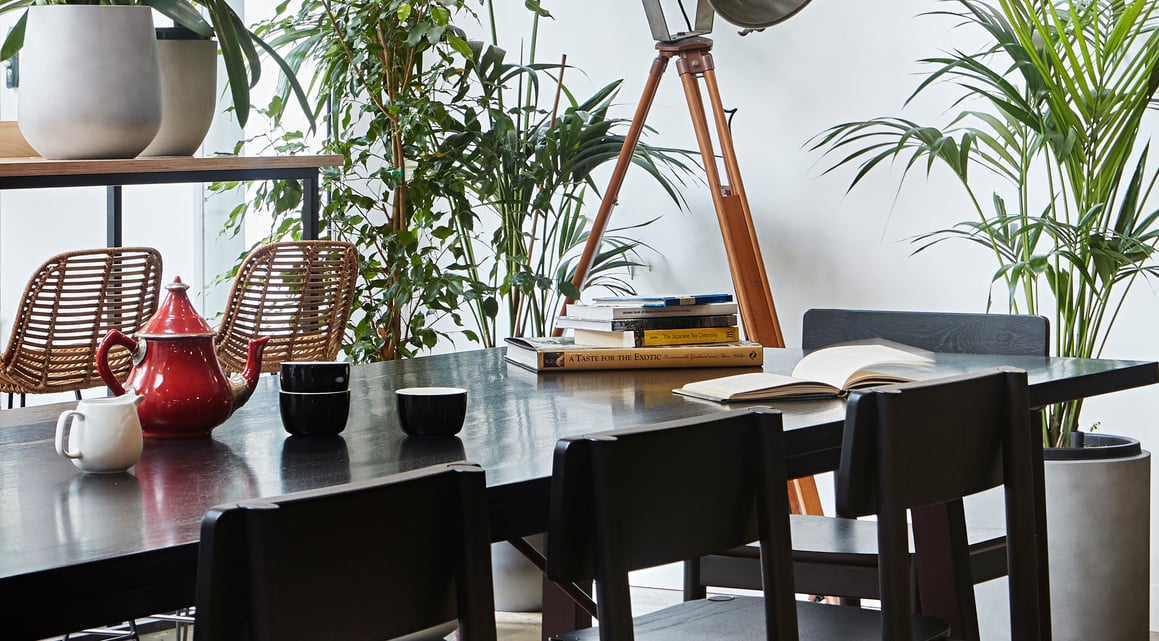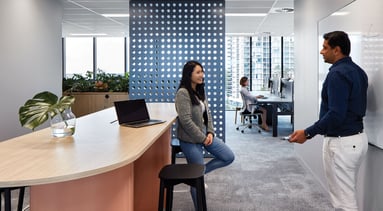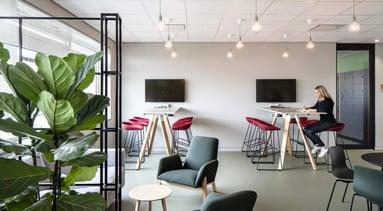Equipping the home office in the post-Covid world

Many companies have gone the extra mile to kit out their employees’ home offices and make their remote-working experience better during the pandemic. Now, with workplaces starting to reopen once more, Simon Pole, Global Design Director at Unispace considers whether it makes sense for businesses to continue offering furniture loans and fittings allowances as a standard employee benefit.
It’s a story largely overshadowed by the broader news agenda, but the office furniture industry has experienced significant upheaval and pronounced change since the onset of the pandemic. Conventional bulk orders have plummeted, replaced by growing interest from individual consumers looking to equip their newly established home offices.
In many instances, employers have funded these orders themselves, recognising the urgent need to support their employees, some of whom have never worked from home before. But as organisations progress with their return to office strategies in the months ahead, questions are now being asked about whether this sort of furniture subsidising needs to continue indefinitely.
“It’s common for organisations to equip their teams with laptops and even mobile phones to keep them connected when they’re outside of the physical office,” says Pole. “However, the provision of chairs, desks and other furniture is a recent development born of short-term necessity, and so it’s understandable that organisations are now considering the extent of their responsibility to equip home offices moving forwards.”
In our Propeller Framework, we establish that the future workplace will be a place where teams come together to collaborate, innovate and problem-solve, with the majority of focus work carried out elsewhere at home or at a remote location. But as this new world starts to take shape, should employers be doing more to empower their employees when working from home?
Catering for a unique remote working scenario
Pre-Covid, Unispace operated to an ad hoc flexible working policy, allowing team members to work from home whenever required. We invested in cloud-based technologies to support seamless connectivity from any location, and, at the start of the pandemic, this allowed us to transition to remote working with minimal fuss. But like most organisations, the need to hastily equip employees’ home working environments presented a new and unexpected challenge.
“We recognised that 100% remote working wasn’t going to be a short-term deviation for our business, but a long-term reality,” explains Pole. “So we wanted to go the extra mile and equip every team member with a home office environment that supported their wellbeing and productivity.”
From ad hoc support to permanent policies
On a practical level, this meant sending out equipment in taxis and hired vans to give employees everything they needed as quickly as possible, as well as allowing employees to purchase additional furniture where these arrangements weren’t possible.
It’s a move that has paid off, particularly as the pandemic has stretched on far longer than anyone initially anticipated. And it’s a story we’ve seen replicated across many of our clients. Some companies have relied upon their existing furniture to provide a quick fix for employees; others have opted to place new orders or encouraged employees to make the purchases themselves and expense them back.
In fact, some of the world’s larger organisations have since introduced formalised home office allowances for their employees, with each team member given a capped amount to spend on their desired fittings and furniture. Others have provided an approved range of items which can be ordered and delivered to the employee’s home, all paid for by the organisation as there is a recognition that the home office is here to stay and legitimate part of the places their people work and need to be ergonomically set up.
We’re also seeing more evidence of job candidates asking questions about home office policies and whether prospective employers will be prepared to subsidise kitting out their home setup. To date we have not seen any government initiatives, policies or unions demanding specific solutions for the home office.
“As the post-Covid world starts to take shape, it’s possible that home office furniture will become more of a conventional workplace benefit, either on bought or leased basis,” suggests Pole. “But the mechanics of these schemes will differ considerably from place to place. Some organisations may insist that all furniture is returned when an employee leaves, or shape their policy around length of service, rewarding loyalty with gifted office equipment.” Possibly one of the hardest decisions that an organisation will make is how to achieve parity of expenditure for their employees knowing everyone starts at a slightly different point when it comes to a home office. For example, in a post covid scenario, if an employee decides to work from the office full-time, do they qualify for a home office allowance? If you ask workers in the southern hemisphere they will say yes as they have been in and out of lockdown over the past year and you never know when a short circuit breaker may be used as an effective way to close down a sudden outbreak.
To equip or not to equip
Creating a home office equipment policy could also lay the groundwork for other considerations. For example, should organisations also support employees with their utilities and internet bills or extend their in-office catering arrangements to give home workers subsidised breakfasts and lunches? Some countries have allowed a percentage of these bills to be a tax deduction to soften the blow.
That’s why we’re advising companies to determine their overarching office strategy before they splash the cash. The central issue is not desks and chairs; it’s about understanding the balance between home- and office-based activity and what is being asked of employees as a consequence. Ultimately, organisations that focus on developing destination workplaces – places their teams actively want to spend time in – may find it easier to shape supportive home office policies than those who encourage their teams to permanently work from home.
“The big question is, are your employees asking you to work from home, or are you asking them?” suggests Pole. “For organisations that are significantly reducing office space or dispensing with their office altogether, there is a clear obligation to ensure that staff are fully supported in their home working environments. Not only does this carry its own cost implications, but these organisations will also miss out on the benefits that a true destination workplace brings.”
To hear more about how to adapt your workplace for the post-Covid world, download our Propeller Workplace guide here.


